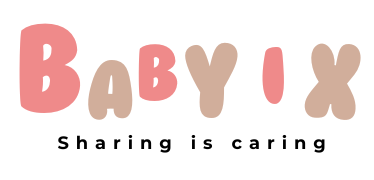How to Restart Breastfeeding After Stopping

Relactation is a journey for mothers to restart breastfeeding. It’s a second chance to give their baby the benefits of breast milk. It’s important to understand the basics and approach it with the right mindset.
Introduction to Relactation
Relactation is for mothers who want to start or restart breastfeeding. It’s a way to provide their baby with breast milk’s benefits for longer. It can be tough, but with support, many mothers succeed.
Key Takeaways
- Relactation is the process of restart breastfeeding after stopping
- Relactation requires patience, dedication, and the right guidance
- Restart breastfeeding after stopping can be challenging, but many mothers can overcome the obstacles
- Relactation is a viable option for mothers who want to resume breastfeeding
- Relactation offers numerous benefits for both mothers and babies
- Relactation is a personal and emotional journey that requires sensitivity and understanding
Understanding Relactation: How to Restart Breastfeeding After Stopping
Relactation lets mothers start breastfeeding again after stopping. It’s a tough but rewarding journey. It’s great for babies to get breast milk’s benefits.
The relactation process mixes physical and emotional factors. These include the mother’s health, the baby’s age and willingness, and how often they nurse or pump.
When thinking about relactation after stopping, knowing the body’s response is key. It takes time for the body to make milk again. Frequent nursing or pumping helps. Some mothers might relactate faster than others, based on their health and how long they’ve stopped.
To boost chances of successful relactation after stopping, mothers can try a few things:
- Start with frequent breastfeeding or pumping sessions to stimulate milk production
- Use a breast pump to express milk when not breastfeeding
- Stay hydrated and eat a balanced diet to support milk production
By understanding the relactation process and taking the right steps, mothers can start breastfeeding again. This way, they can give their babies the many benefits of breast milk.
Medical Considerations Before Starting Relactation
Before starting relactation, it’s key to think about health factors. A good relactation guide will cover health issues for both mom and baby. Knowing your current lactation status and any health conditions is important.
Healthcare providers can offer great advice and support. They help create a plan that fits your specific needs.
Important medical factors include the mom’s health, the baby’s age and health, and any past breastfeeding. Regular check-ups with a healthcare provider are vital. They help spot any issues early and make relactation smoother.
A relactation guide should also talk about common health issues that might affect relactation. This includes conditions like PCOS or thyroid problems.
It’s also important to talk openly with your healthcare provider. Share any concerns or questions and your health information. This way, you and your healthcare provider can make a relactation plan that works for you.
For a successful relactation journey, you need to consider medical factors and work with a healthcare provider. Following a relactation guide and getting professional advice can help you overcome challenges and reach your breastfeeding goals.
Preparing Your Body for Relactation
To achieve relactation success, you need to get your body ready. This means eating well, drinking lots of water, resting, and using physical methods to help lactation. Eating foods full of protein, healthy fats, and carbs is key for lactation.
Drinking water is also important for relactation. It helps make milk and keeps you hydrated. Also, rest is key. Try to sleep 7-8 hours a night and nap during the day if you can.
There are physical ways to help your body make milk again. Breast massage and pumping can really help. Here are some tips to start:
- Massage your breasts gently to stimulate blood flow and milk production
- Use a breast pump to express milk and stimulate lactation
- Apply warm compresses to your breasts to help stimulate milk flow
By following these tips and living a healthy lifestyle, you can boost your chances of relactation success. Be patient and keep trying. With the right steps and support, you can relactate and feed your baby well.
Essential Tools and Supplies for Relactation
Relactation needs the right tools and supplies to help. Having the right equipment can make a big difference. A good breast pump is key for stimulating milk and expressing it when needed.
Other important items include nursing pads for leakage and comfy breastfeeding clothes. Galactagogues like lactation teas or supplements also boost milk supply.
Here are some key items for relactation:
- Breast pumps: manual or electric, depending on personal preference and needs
- Nursing pads: disposable or washable, to manage leakage and discomfort
- Comfortable breastfeeding clothing: tops and dresses that allow for easy feeding and skin-to-skin contact
- Galactagogues: lactation teas, supplements, or foods that support milk production
Relactation support is more than just tools and supplies. It’s about knowing how to use them well. With the right equipment and knowledge, the journey becomes smoother and more manageable.

Starting the Relactation Process
Starting again with breastfeeding means you need to get your breasts working again. You can do this with skin-to-skin contact, breast massage, and a good pumping plan. These steps help you get back to breastfeeding.
First, holding your baby close is key to starting milk again. Hold your baby against your bare chest. Let them nuzzle and suckle. Regular skin-to-skin contact boosts milk production and strengthens your bond.
Effective Relactation Methods
- Breast massage techniques: gently massaging the breasts in a circular motion to stimulate milk production
- Pumping schedules: establishing a regular pumping routine to express milk and stimulate the breasts
- Frequency and duration: pumping 8-12 times per day, with each session lasting 10-15 minutes
Stick to these relactation methods and keep a steady routine. This way, you can boost your milk supply and start breastfeeding again. Be patient and keep trying, as it takes time and effort.
Building and Maintaining Milk Supply
Once milk production starts again, the goal is to keep it up. This means feeding or pumping often, eating well, and drinking lots of water. To boost milk supply, try these relactation tips: feed or pump a lot, eat foods that help milk production, and stay hydrated.
Eating right is key to keeping milk flowing. Add foods like oats, leafy greens, and nuts to your diet. They help with milk production. Also, drink at least eight glasses of water a day. This helps your body make milk.
- Frequent feeding or pumping to stimulate milk production
- A nutritious diet rich in galactagogues to support lactation
- Staying hydrated by drinking plenty of water
- Managing supply and demand by adjusting feeding or pumping schedules as needed
By using these relactation tips and living healthily, you can keep your milk supply strong. This ensures your baby gets the milk they need.
Common Challenges and Solutions During Relactation
Relactation after stopping can be tough, both physically and emotionally. Many mothers face hurdles during this time. Knowing these challenges helps prepare and overcome them.
Common issues include physical discomfort, emotional stress, and managing time. Frequent sessions can cause sore nipples or engorged breasts. Emotional stress comes from frustration or anxiety about relactation.
To tackle these problems, mothers can try different strategies. For physical issues, warm compresses or pain relievers can help. Emotional stress can be eased by talking to loved ones or a lactation consultant. Time management can be improved by making a schedule that fits all activities.
- Staying hydrated by drinking plenty of water
- Eating a balanced diet that includes foods rich in nutrients
- Getting enough rest to help the body recover from the demands of relactation
Being ready for challenges in the relactation process boosts confidence. Remember, every mother’s experience is unique. Be patient and seek help when needed.
Support Systems and Resources
Having a strong support system is key for relactation success. A good relactation guide stresses the need for emotional and practical support. Lactation consultants offer personalized advice and guidance.
Community resources, like breastfeeding support groups, are also vital. They provide a safe space for women to share and ask questions. Organizations like the La Leche League and the United States Breastfeeding Committee offer relactation support.
Family involvement is also important. A supportive partner, family, and friends can greatly help.
- Seeking professional support from lactation consultants
- Joining community resources, such as breastfeeding support groups
- Building a strong support network of family and friends
With these support systems, women can boost their chances of successful relactation. A good relactation guide can help build a strong support network. It also offers tips for overcoming common challenges.
Conclusion: Your Relactation Journey
Starting again with breastfeeding through relactation can be both rewarding and challenging. Every mother’s journey is unique. With patience, dedication, and the right support, you can restart breastfeeding and enjoy nursing your baby again.
This guide has covered the key steps of relactation. It helps you understand the process, prepare your body, and overcome common obstacles. By using the advice and techniques here, you can control your relactation journey and reconnect with breastfeeding.
Surround yourself with lactation consultants, supportive family, and online communities. You’re not alone – many mothers have restarted breastfeeding successfully. Celebrate small victories and trust in your body’s ability to nourish your baby.
Start this relactation journey with an open heart and determination. Your hard work will create a strong bond with your child. This bond is priceless.






